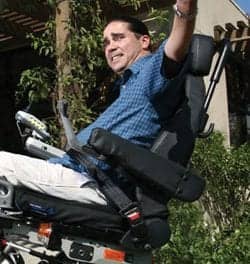An updated review of studies published by The Cochrane Collaboration confirms that compared to staying sedentary, strength exercises boost bone density in postmenopausal women with osteoporosis. Prolonged periods of inactivity actually contribute to reduced bone mass, but adding a mechanical load, such as body weight or dumbbells, mitigates the loss, said Tracey Howe, the review’s lead author, professor of rehabilitation services at the Glasgow Caledonian University, Scotland.
Howe and colleagues examined 43 studies that evaluated the effect of exercise programs on the bone health of 4,320 postmenopausal women with osteoporosis. This update of a 2000 review evaluates 27 studies not included in the earlier version.
The main conclusions of the review remain unchanged and, as in the 2000 review, the authors found that exercise has the potential to be a safe and effective way to avert bone loss in postmenopausal women. In general, all types of exercise programs such as aerobics, strength training, walking, and tai chi improved bone mineral density and slightly reduced the risk of fracture.
Overall, women who did weight training programs that focused on progressively increasing lower body strength had a 1 percent smaller reduction in bone mineral density at the hip, compared to control group participants who did not exercise.
When it came to spinal bone mineral density, the most effective exercise program was a combination of different types of exercise. Performing more than one type of exercise, such as walking, running, dancing or progressive strength training, produced a 3 percent smaller reduction in spinal bone mineral density, compared to non-exercisers, Howe said.
"The review confirms what most of the studies have suggested all along: Weight-bearing exercise is not only helpful, but essential to prevent and to limit osteoporosis in people as they get older," said C. David Geier, Jr, MD, assistant professor of orthopedic surgery and director of the sports medicine program at the Medical University of South Carolina.
Although the review results are interesting, "you’re not going to do a certain type of exercise to prevent a certain type of fracture," Geier said. "The key with osteoporosis and exercise is to try to prevent it in the first place. Once the hip fracture happens, the cat’s out of the bag. The impact on quality of life and life expectancy is significant."
[Source: Health Behavior News Service via Medical News Today]




